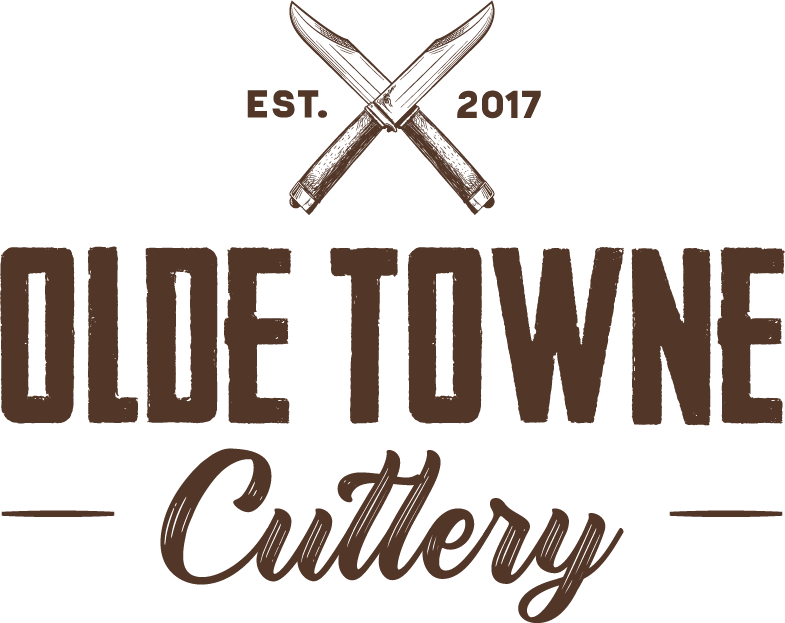
There are some knives so famous that everyone knows what they are, including non-knife people; the Bowie knife, the Ka-Bar fighting knife, and the famous Barlow to name a few. Of all the well-known knives out there, the Barlow probably has the greatest following in the collector community and the most longevity in popularity. Though the Barlow can come in a variety of formats, we all agree on some basics in its design; slip joint, long bolster, one or two blades, classic teardrop lines, and great functionality. But where did it come from? Though we think of the Barlow as American as baseball and apple pie, its roots are deeper than our young country.
By the 1400’s, Sheffield, England had become a center for cutlery due to its proximity to natural resources, which we discussed in Volume III of our newsletter. By the 1600’s, the industry had formally organized, and a “Company of Cutlers” had been established; which is something a bit like a guild. It was in that century that a man named Obadiah Barlow made a knife which he branded with his namesake. But as many knifemakers will tell you, naming a knife after yourself doesn’t make them instantly popular even if you are a super cool dude. Obadiah had a grandson who later joined the business and grew his exports to the British colonies in the middle of the 18th century.
There are two other names that come up in research that are associated with the Barlow. Luke Furnace of Stannington, on the outskirts of Sheffield seems to have a connection, and Samuel Barlow and the Barlow Brothers are found in the Directory of Cutlers. As with popular patterns today, it is likely that all these makers produced a knife that shared many of the ancestral characteristics of what we call the modern Barlow.

John Russell
Sheffield Cutleries continued to dominate the market in north America because American cutlery had yet to garner a reputation for quality. In fact, it was a big gamble for a fledgling knife company founded by John Russell to advertise the product as “Made in America” because of the stigma often associated with poorly made domestically produced items in the early 1800’s. But when John Russell moved from Augusta, Georgia to Greenfield, Massachusetts in 1830, he embarked on creating his vision for a massive cutlery facility that would rival the greatest of the Sheffield giants. John Russell established the “Green River Works” and equipped it with the most modern and efficient steam powered machines of the day.There are two other names that come up in research that are associated with the Barlow. Luke Furnace of Stannington, on the outskirts of Sheffield seems to have a connection, and Samuel Barlow and the Barlow Brothers are found in the Directory of Cutlers. As with popular patterns today, it is likely that all these makers produced a knife that shared many of the ancestral characteristics of what we call the modern Barlow.

John Russell Cutlery – Green River Works
We often think of Henry Ford as the king of mechanization and automation, but Russell implemented new power-hammers that abolished the labor-intensive hand processes which were so time consuming three quarters of a century before Ford. These innovations enabled the Green River works to produce exponentially more blades in a day than rival Sheffield firms and the quality was consistent and superb.

Green River Works Advertisement
The Civil War must have been good to the company because in 1868, plans were set in place to develop the Green River Works into the largest cutlery house in the world. They made over 2500 different varieties of goods and produced a stunning 36,000 pieces per day. One of these was the Barlow, which was one pattern in over 150 different varieties of pocket cutlery offered.
But the Barlow was always a favorite. Why? Well the long bolster ensured strength and durability. The frame at 3.5” is just the right size for a pocket, and the shape is comfortable for whittling and general every day tasks. Plus, there is something about the shape and bolster proportions that made it an instant classic. The same reason why the ’64 Mustang is sexy is the same reason why the Barlow is always a favorite; because its’s just right and needs no improvement.
The company still exists today, though they do not produce the Barlow anymore. Today they produce the Dexter-Russell line of restaurant cutlery, and they dominate this two billion-dollar industry.
So, who has carried a Barlow? Well we know that George Washington carried one because it is in the Masonic National Memorial in Alexandria, Virginia (though this one had to be British made ironically). Lincoln had one that was accompanied by one of his hilarious self-deprecating tales. And Story-Tellers include the Barlow for authenticity to their tales. Mark Twain referenced the Barlow in Huckleberry Finn and The Adventures of Tom Sawyer. Both Jerry Clower and Carl Hurley have referenced the Barlow in their “stories-told-funny”.

Russell Barlow
And what about those original Russell Barlows? Well, if you find one for sale in good condition, buy it immediately. (Buyer beware of fakes; read up on how to spot them). They have Russell’s mark on the bolster; an “R” with an arrow through it. They often had a sawcut amber bone and were found with several blade variants. Many companies have duplicated this knife over the years, but the Russell, though not technically the original Barlow, is considered the father of the American Barlow. For it was his manufacturing techniques, production capabilities, and classic style that brought the Barlow into every American’s consciousness.
